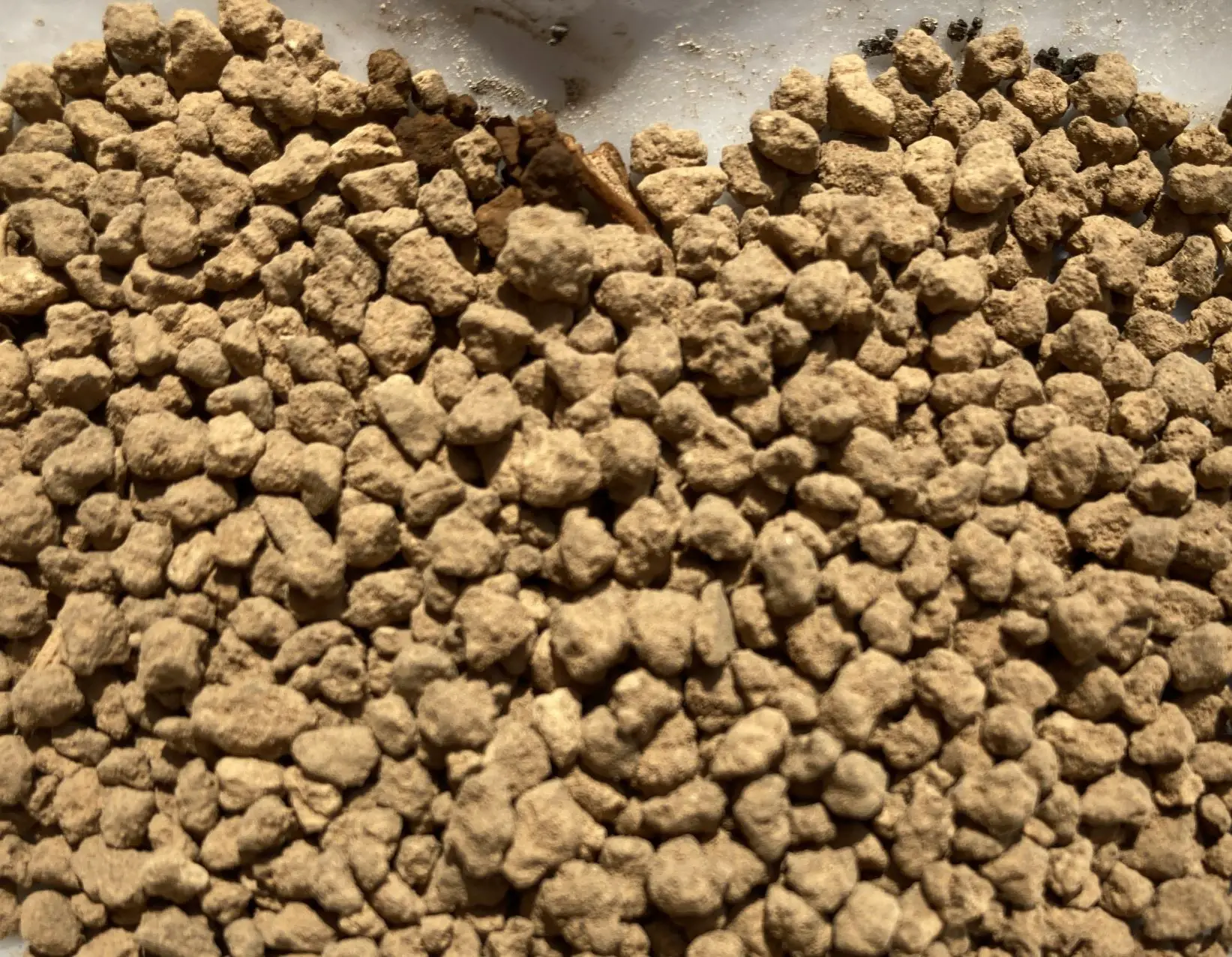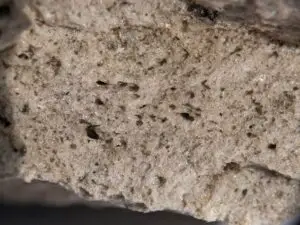Akadama is quite expensive and could be difficult to get depending on where you live. As such, people are sometimes looking for a good alternative for Akadama.
Vermiculate, lava rocks (volcanic soil) and pumice are good alternatives for Akadama because they meet most of the requirements that a good bonsai soil should have; good aeration, drainage, water retention, nutrient retention and adequate soil pH.
What is good bonsai soil?
Bonsai soil requirements
Bonsai soil requires;
- good aeration,
- good drainage,
- good water retention,
- good nutrient retention (low in nutrients), and
- adequate soil pH (slightly acidic).
Good aeration, drainage and water retention
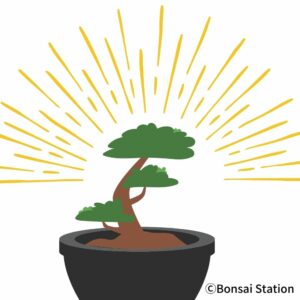
Bonsai trees, like all other plants, need water to create energy through photosynthesis. They need oxygen for root respiration as well. So the soil with good water retention, drainage and aeration enables stable and healthy growth of bonsai trees.
Good nutrient-holding capacity
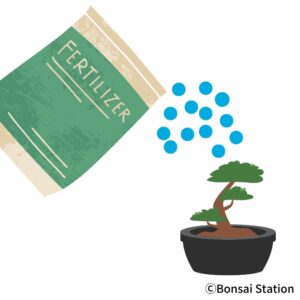
Bonsai soil must contain little or no organic matter but should be able to hold the nutrients well when we fertilize it.
If the bonsai soil is rich in nutrients, controling the strength of tree growth becomes harder because the trees can take abundant energy in the soil all the time. Branches and internodes tend to elongate when trees grow fast with rich nutrient soil.
Slightly acidic soil
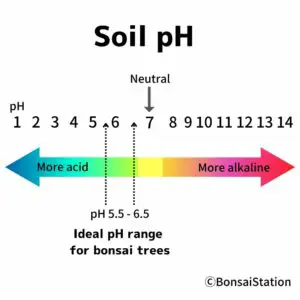
Soil pH & bonsai tree
Most plant nutrients are optimally available to plants in general within 6.5 to 7.5 pH range, which is generally compatible with root growth as well. For the majority of bonsai tree species, soils with a pH between 5.5 to 6.5, meaning slightly acidic soil, generally provide the best growing conditions.
For more information on this topic, please read the following post.
Why is Akadama good for bonsai?
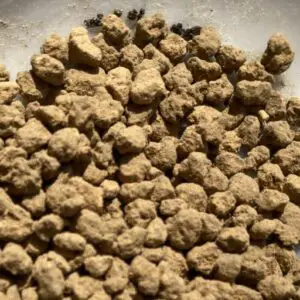
Akadama
| Aeration | Drainage | Water holding Capacity |
Nutrient holding Capacity |
pH | |
| Akadama | High | High | High | High | pH 5.1-5.5 |
Akadama meets all the requirements that a bonsai soil needs; good aeration, drainage, and water-/nutrient-holding capacity with adequate acidity for bonsai trees’ growth. It has low nutrients, which is also good as bonsai soil.
Akadama is widely used as bonsai soil in Japan because of its uniqueness as a good growing medium for bonsai trees as well as its abundance and reasonable price.
For more about Akadama, please read the following post.
Akadama alternatives
A perfect substitute for Akadama is hard to find because of its uniqueness which checks all the boxes to be a good bonsai soil. That being said, the followings are good candidates for Akadama alternatives, especially when they are mixed together in an appropriate composition.
- Vermiculite
- Lava rocks
- Pumice
Akadama vs. vermiculite
| Aeration | Drainage | Water holding Capacity |
Nutrient holding Capacity |
pH | |
| Akadama | High | High | High | High | pH 5.1-5.5 |
| Vermiculite | High | High | High | High | pH 6.0-7.0 |
What is vermiculite?
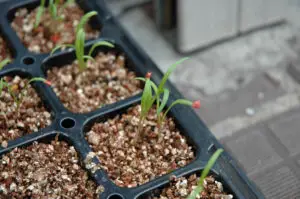
Seedlings planted in vermiculite
Vermiculite is an aluminum-iron magnesium silicate mineral which have the appearance of mica. For gardening use, the mineral is heated intensely which expands into accordion-shaped granules with countless layers of thin plates. It is lightweight in the form of shiny flakes, which are usually golden brown to blackish in color.
What makes vermiculite a good alternative to Akadama
Horticultural vermiculite has the excellent property of improving soil drainage and aeration while retaining water and nutrients to feed the root system. Its pH is around neutral, though it depends on its origin, and it does not deteriorate or rot over time.
In particular, its nutrition-holding capacity is very high. As measured by CEC (Cation Exchange Capacity: a measure of soil fertility), vermiculite’s rate is 90-125 milligrams equivalents per 100 grams, which is in fact much higher than that of Akadama of 13-31 milligrams equivalents per 100 grams. (cf. CEC of humus is around 200 milligrams equivalents per 100 grams.)
This makes vermiculite a very good alternative to Akadama in bonsai soil use.
| CEC ∗ (meq/100 g) |
|
| Akadama | 13 – 31 |
| Vermiculite | 90-125 |
| Humus | 200 |
∗CEC (Cation Exchange Capacity): a measure of soil fertility
What are the drawbacks of vermiculite in bonsai soil use?
There are three drawbacks of vermiculite as bonsai soil use: (1) pH, (2) weight and (3) looks.
pH
Vermiculte’s pH is essentially neutral. But owing to its ability to neutralize acidity and high nutrient-holding capacity (it holds on to chemicals long), pH may increase to alkaline over time by adding fertilizers to the soil. In other words, vermiculite’s carbonate compounds in it foster alkaline reactions.
As the majority of bonsai tree species prefer soils with a pH between 5.5 to 6.5, alkaline soil is not desirable for bonsai trees, if it happens.
Weight
Vermiculite is very light. 2 pounds of vermiculite is equal to 8 quarts, in contrast to 2 pounds of lava rock to 2 quarts.
Vermiculite
Lava rock
Although it is easier to move bonsai pots from one place to another when you use vermiculite, this lightweight does make bonsai trees difficult to be able to stand in pots without attachments. In addition, strong wind or even watering may blow/flow away some of the soil.
Looks
Another shortcoming of vermiculite as bonsai soil is its looks; vermiculite is a shiny golden flake and does not match the bonsai aesthetics, which embrace simple and natural Zen beauty. Akadama is praised as bonsai soil also because its reddish color contrasts with the green of the bonsai trees beautifully.
Akadama vs. lava rock
| Aeration | Drainage | Water holding Capacity |
Nutrient holding Capacity |
pH | |
| Akadama | High | High | High | High | pH 5.1-5.5 |
| Volcanic soil/ lava rock | High | High | Mid-low | Mid-low | pH 6.0-7.0∗ |
∗ Depends on its origin.
What is lava rock?
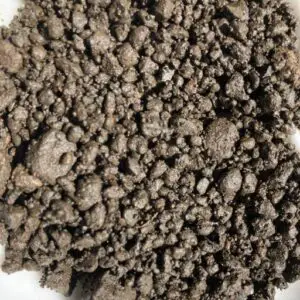
Lava rocks/ Volcanic sand
Lava rocks are formed from lava erupted from a volcano, which rapidly cools and crystallizes to form igneous (magmatic) rocks. Lava rocks are then withered over time and become volcanic soil. They are composed of high amounts of iron and magnesium elements as well as calcium.
What makes lava rock a good alternative to Akadama
Due to its porosity, lave rocks/ volcanic soil for gardening use, in general, has good aeration and drainage. pH level is usually slightly acidic to neutral, with some exceptions being alkaline depending on its origin.
What are the drawbacks of lava rock in bonsai soil use?
Its water-holding and nutrient-holding capacities depend on where it comes from because not all lava rocks are the same. It may be too porous to hold water for long; meaning the drainage is good but the soil dries fast after watering.
And some lava rocks have as high a nutrient-holding capacity as Akadama but others have almost none because of the differences in their mineral compositions.
| CEC ∗ (meq/100 g) |
|
| Akadama∗∗ | 13 – 31 |
| Lava rock∗∗∗ | 0.2 – 24 |
∗CEC (Cation Exchange Capacity): a measure of soil fertility
∗∗12 samples of different grain sizes
∗∗∗28 samples from Hawaiian lava rocks. CEC of 3.76 on average.
Source: A. Revil, M. Le Breton, Q. Niu, E. Wallin, E. Haskins, D.M. Thomas, Induced polarization of volcanic rocks – 1. Surface versus quadrature conductivity, Geophysical Journal International, Volume 208, Issue 2, February 2017, Pages 826–844.
小島 道也, 佐藤 幸夫, 丸山 保司, 鉢物培養土用各種資材の理化学的性質, 日本土壌肥料学雑誌, 1982, 53 巻, 1 号, p. 53-56.
Although it is difficult to know beforehand, it is important to choose the one that can hold water and nutrients enough to be a good substitute for Akadama.
Akadama vs. pumice
| Aeration | Drainage | Water holding Capacity |
Nutrient holding Capacity |
pH | |
| Akadama | High | High | High | High | pH 5.1-5.5 |
| Pumice | High | High | Low | Low | pH 5.5-6.5∗ |
∗ Depends on its origin
What is pumice?
Pumice is a volcanic rock, usually in light color, created when a gas-rich, super-heated, highly pressurized rock is ejected from a volcano, solidifying rapidly.
Pumice is a very light rock due to the many bubbles inside it. It has an average porosity of 90% and floats on water possibly for years until it is eventually waterlogged and sinks. Its density varies depending on the thickness of the solid material between the bubbles.
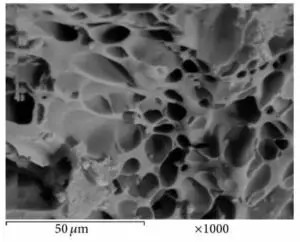
Porosity of pumice
(Source: Fig 3 in Ismail, A I M et al. “Pumice Characteristics and Their Utilization on the Synthesis of Mesoporous Minerals and on the Removal of Heavy Metals.” International scholarly research notices vol. 2014 259379. 29 Oct. 2014)]
At a closer look, you will notice that pumice is mainly composed of glass. This is why when you rub pumice with your hand, small abrasive bits of rock (glassy debris) come off.
(Source: photo taken by Benjamint444)
What makes pumice a good alternative to Akadama
Due to its high porosity, pumice has very good aeration and drainage. In fact, Kanuma soil, a commonly used bonsai soil, is a kind of pumice that is used particularly for azalea bonsai. Pumice can also be used at the bottom of pots for drainage.
What are the drawbacks of pumice in bonsai soil use?
Pumice has low water-holding and nutrient-holding capacity because it is mainly composed of glass, which is a major drawback as bonsai soil. Low nutrient-holding capacity is especially problematic because bonsai soil should not contain much organic matter so that bonsai growers can control the growth by adding nutrients when needed.
Can perlite be an Akadama substitute?
Perlite is not ideal for bonsai soil because it is alkaline (pH of 7.5 to 8.5). Most of the bonsai tree species, as other plants, prefer acidic soil, not alkaline. Also, perlite is very lightweight and can easily flow out of the bonsai pot with watering or by the wind.

